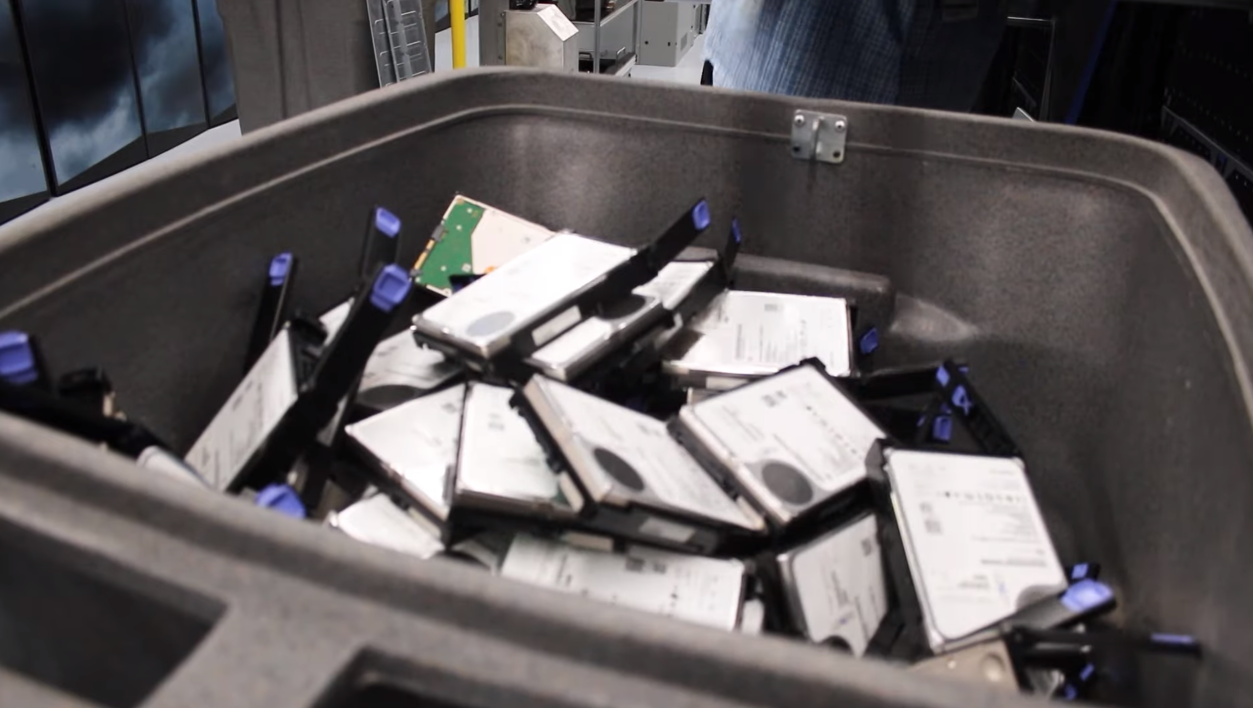
Oak Ridge National Laboratory has decommissioned its Alpine storage system, a 250-petabyte storage system that held data for the Summit supercomputer and its other support systems. The Summit supercomputer, currently the world's ninth-fastest supercomputer, will be retired on November 1st, but its aging Alpine storage didn't survive that long.
As ORNL prepares for the Discovery system—a computer set to be the world's fastest with an estimated 8.5 exaFLOPS of performance—the time has come to decommission its predecessor, Summit. Summit was initially set to be shut down in 2023, but its high productivity rates led the Department of Energy to keep it in operation for another year. Unfortunately, its storage could not last so long.
Alpine was part of ORNL's storage solution for Summit and its peripheral systems, holding scratch data from the supercomputer and its external nodes, which pre- and post-process Summit's calculations. The Alpine storage system held 250 petabytes of capacity inside 32,494 10TB NL-SAS drives. Made up of 77 IBM Elastic Storage Server (ESS) nodes, the system could have 2.2 TB/s random read and write speeds at its peak. Still, in recent years, drive failure rates have hit unacceptable levels, necessitating installing a stopgap replacement storage system, Alpine2.
When the time came to dismantle Alpine, the ORNL team could fully dismantle the data servers in under two months, thanks to an industrial disk drive shredder. An outside vendor brought a mobile shredder, a four-foot-wide, three-horsepower unit that can eat one hard drive every 10 seconds. ORNL gives an estimated 12,000 clients access to Summit’s computing power, so data security was seen as essential.
“Even though we’re not dealing with classified data, the data still belongs to the users, and we have a responsibility to make sure it’s protected,” said Paul Abston, group leader for HPC infrastructure at ORNL. “The teeth of the shredder tear the drives into tiny pieces, making it impossible to reconstruct into a functioning drive.”
Thanks to help from outside vendors, ORNL fully shredded and recycled all 32,000 of Alpine’s drives, plus an additional 10,000 drives from other Summit support systems. The effort far outpaced Oak Ridge’s previous significant decommissioning effort of dismantling the Atlas storage system in 2019, a 20,000-hard drive job that took nine months. ORNL also purchased its heavy-duty data shredder, making future jobs even more efficient.
Summit once stood as the world’s most powerful supercomputer, a title it held for almost a year after its initialization in 2018. It runs on 4,356 compute nodes, each powered by two IBM Power9 22-core 3.07 GHz CPUs and six Nvidia Tesla GV100 GPUs. Summit uses the Alpine2 storage system, a 50-petabyte filesystem across 16 IBM ESS nodes. This data-lite storage system will support Summit until its end of life, transitioning to read-only mode on November 19th and eventually phasing into the bullpen of ORNL’s supplementary parallel filesystems.
Summit’s next-gen replacement, Discovery, is not expected to come online until 2027; the application period for potential vendors ended on August 30th, but no winning bid has yet been announced. In the meantime, ORNL still operates Frontier, the world’s fastest supercomputer per the Top500 leaderboards.







